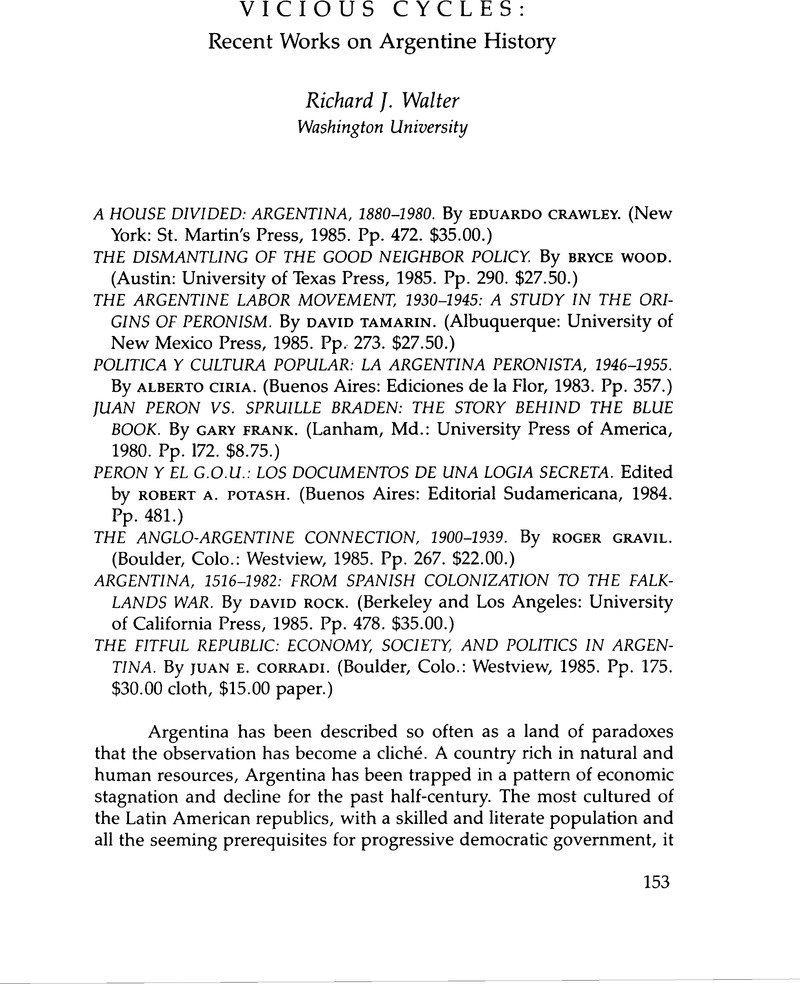No CrossRef data available.
Published online by Cambridge University Press: 12 October 2022

1. Robert A. Potash, The Army and Politics in Argentina 1928–1945: Yrigoyen to Perón (Stanford: Stanford University Press, 1969); and The Army and Politics in Argentina, 1945–1962: Perón to Frondizi (Stanford: Stanford University Press, 1980).
2. See Potash, Army and Politics, 1928–1945, 185.
3. For example, Carlos Escudé, Gran Bretaña, Estados Unidos y la declinación argentina, 1942–1949 (Buenos Aires: Editorial de Belgrano, 1983); R. A. Humphreys, Latin America and the Second World War, 2 vols. (London, 1981, 1982); Mario Rapoport, Gran Bretaña, Estados Unidos y las classes dirigentes argentinas: 1940–1945 (Buenos Aires, 1981); and Randall Bennett Woods, The Roosevelt Foreign-Policy Establishment and the “Good Neighbor”: The United States and Argentina, 1941–1945 (Lawrence: Regents Press of Kansas, 1979).
4. Bryce Wood, The Making of the Good Neighbor Policy (New York: Columbia University Press, 1961).
5. Some representative works in English that deal with these issues are Robert J. Alexander, The Perón Era (New York: Columbia University Press, 1951); Samuel L. Baily, Labor, Nationalism, and Politics in Argentina (New Brunswick, N.J.: Rutgers University Press, 1967); George I. Blanksten, Perón's Argentina (Chicago: University of Chicago Press, 1953); Prologue to Perón: Argentina in Depression and War, 1930–1943, edited by Mark Falcoff and Ronald H. Dolkart (Berkeley and Los Angeles: University of California Press, 1975); Joseph A. Page, Perón: A Biography (New York: Random House, 1983); and Arthur P. Whitaker, The United States and Argentina (Cambridge: Harvard University Press, 1954).
6. For example, Alfredo L. Palacios was Latin America's first socialist deputy, not senator (p. 28); Hipólito Yrigoyen did not enjoy a majority in the Chamber of Deputies when elected in 1916 (p. 37); Roberto Ortiz was not president in 1936 (p. 64); and the election that elevated Perón to the presidency in 1946 was held on 24 February, not 26 February (p. 106).